What Milk I Can Use for Making Cheese
What Brand Is The Best Milk For Cheese Making?
An Experiment With Cow's Milk Available in Sonoma County
by Jane Jackson and Gabe Jackson
Our staff enjoys experimenting and testing our assumptions. In home cheesemaking, one big assumption is that cheesemaking requires high quality milk, and therefore a high sticker price at the grocery store. In February, we set out to test for ourselves how much difference we could detect between store bought cow's milk of different brands and prices to help our hobbyists, our staff, and ourselves decide what is the best milk for cheese making.

Most cheesemakers we speak with here at the shop, who don't have dairy animals of their own, have a favorite brand of milk they use when making cheese at home. Because most of us don't have direct access to milk straight from the farm, we have come to trust certain brands, local or otherwise. In general, we advise cheesemakers to avoid ultra-pasturized milk due to issues with coagulation and curd quality but other than that, there are plentiful options of milk from which to choose. But does the milk brand really make a difference in the resulting cheese? Is higher priced milk worth the cost when it comes to cheese quality?
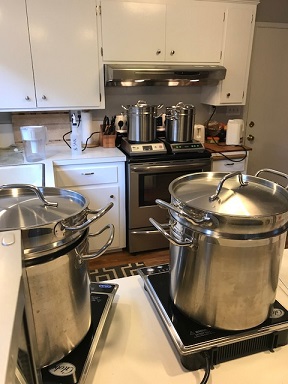
The Milks
We decided to try four different brands of whole milk and followed Mary Karlin's recipe for Cheddar-Jalapeno Cheese Curds (Artisan Cheesemaking At Home, p. 120). The four brands we chose were:
- Straus , an organic, cream-top milk ($4.69 for a ½ gallon) which is sourced from dairies in Sonoma and Marin (CA) counties and bottled in Petaluma, CA.
- Costco's Kirkland Signature Homogenized milk ($4.99 for two gallons), of which this particular batch came from a plant in Fresno, CA.
- Lucerne Brand Homogenized milk ($2.59 for ½ gallon), commonly found at Safeway stores, of which this particular batch came from a plant in San Leandro, CA.
- Claravale Farm Raw milk ($5.39 for a quart) sourced from their own farm of Jersey cows in Paicines in California's Central Valley.
Differences Noticed During the Cheesemaking Process
Starting with appearance, there were some definite differences.
The Claravale raw milk had a yellowish hue and a thin layer of cream at the top. (pic below)
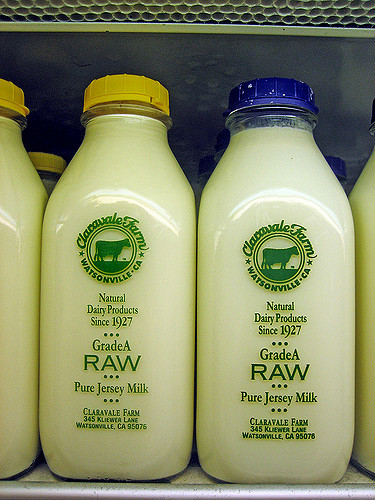
The Straus was whiter than the Claravale and had a thick layer of cream at the top. (pic below)
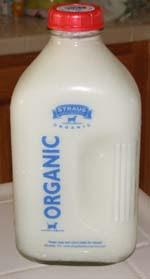
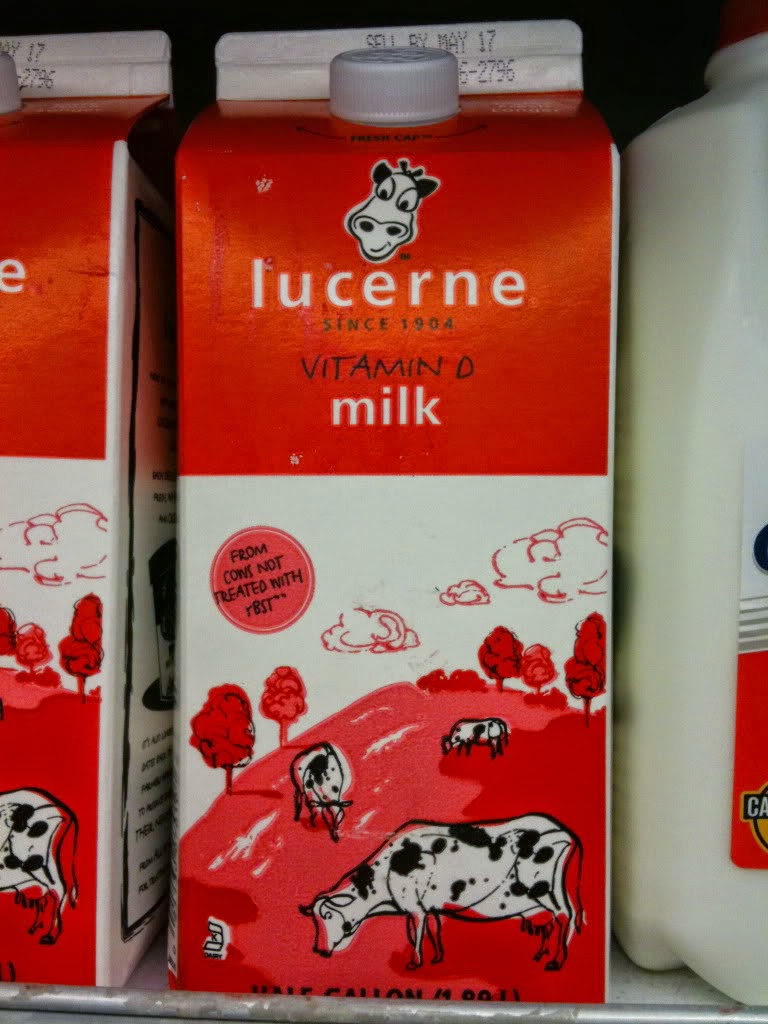
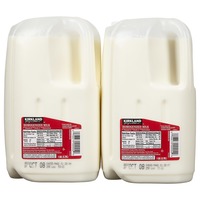
During the check for a clean break, all except the Lucerne were ready to be cut into curd at the allotted recipe time.While cutting the curd, the Kirkland, Straus, and Claravale all exhibited a pretty firm curd with the Claravale being the firmest, followed by the Straus and then the Kirkland which was slightly softer than the Straus. The Lucerne was checked again at +5, +10 and +15 minutes at which point it was decided to cut the curd and move on in spite of the lack of a clean break. The Lucerne was still pretty creamy in appearance and soft on the knife while cutting the curd.



When it came time to ladle the curds into a colander lined with cheesecloth to drain, the most noticeably different curd was the Lucerne.The curds were small like cottage cheese and broke apart easily. The other three had curds of a very similar size and texture, though the Claravale was the firmest. The colanders were then placed over the pots of drained whey at 98-100 degrees F and flipped every 15 minute for an hour until they had melded into a slab. The slabs were then cut into French fry sized strips, tossed with ½ Tbs of salt, placed in a colander over a bowl, covered loosely with cheesecloth and left to drain overnight at room temperature (low 60's in this mid-winter experiment).
Yields and The Taste Test
In the morning the curds were weighed and vacuum sealed for taste testing by our staff. The next addition of salt and the jalapenos and dried red peppers were not added so that curd qualities could be more clearly examined.

The final drained weights for each ½ gallon of milk used were:
Kirkland- 10.5 oz
Straus- 9.2 oz
Lucerne- 11.7 oz
Claravale- 10.6 oz.
During the blind tasting we discussed what we were experiencing with each separate sample. The Straus was noted to have firm, off-white curds that squeaked when chewed, and a creamy taste. The Lucerne was described as milky, wet, and tangy. It was noticeably moist in appearance and taste in comparison to all the others. The Claravale had firm, yellow curds with a nutty taste and somewhat "feet-y" aroma. Finally, the Kirkland was described as having a firm, good texture with a lightly lactic flavor.
Our Recommendation
Before the experiment, we were not sure if the differences between cow milks would be striking. They were! And furthermore, the more expensive milks were not particularly our staff favorites. While we did like the squeaky texture produced by the high fat Straus, the good results and economy price of Costco's Kirkland Signature was the most remarkable finding of the experiment. In Sonoma County, we feel that Kirkland is a good choice for most cheeses. Many good local home cheesemakers have been in the habit of using it, and this experiment made clear that it is a very acceptable choice in your cheese vat.
For cheesemakers outside of our area of Sonoma County, we recommend you try a similar experiment for yourself. This one-day experiment could set you on the right path to success in your cheesemaking hobby!
2018©The Beverage People
What Milk I Can Use for Making Cheese
Source: https://www.thebeveragepeople.com/best-milk-for-cheesemaking.html
0 Response to "What Milk I Can Use for Making Cheese"
Post a Comment